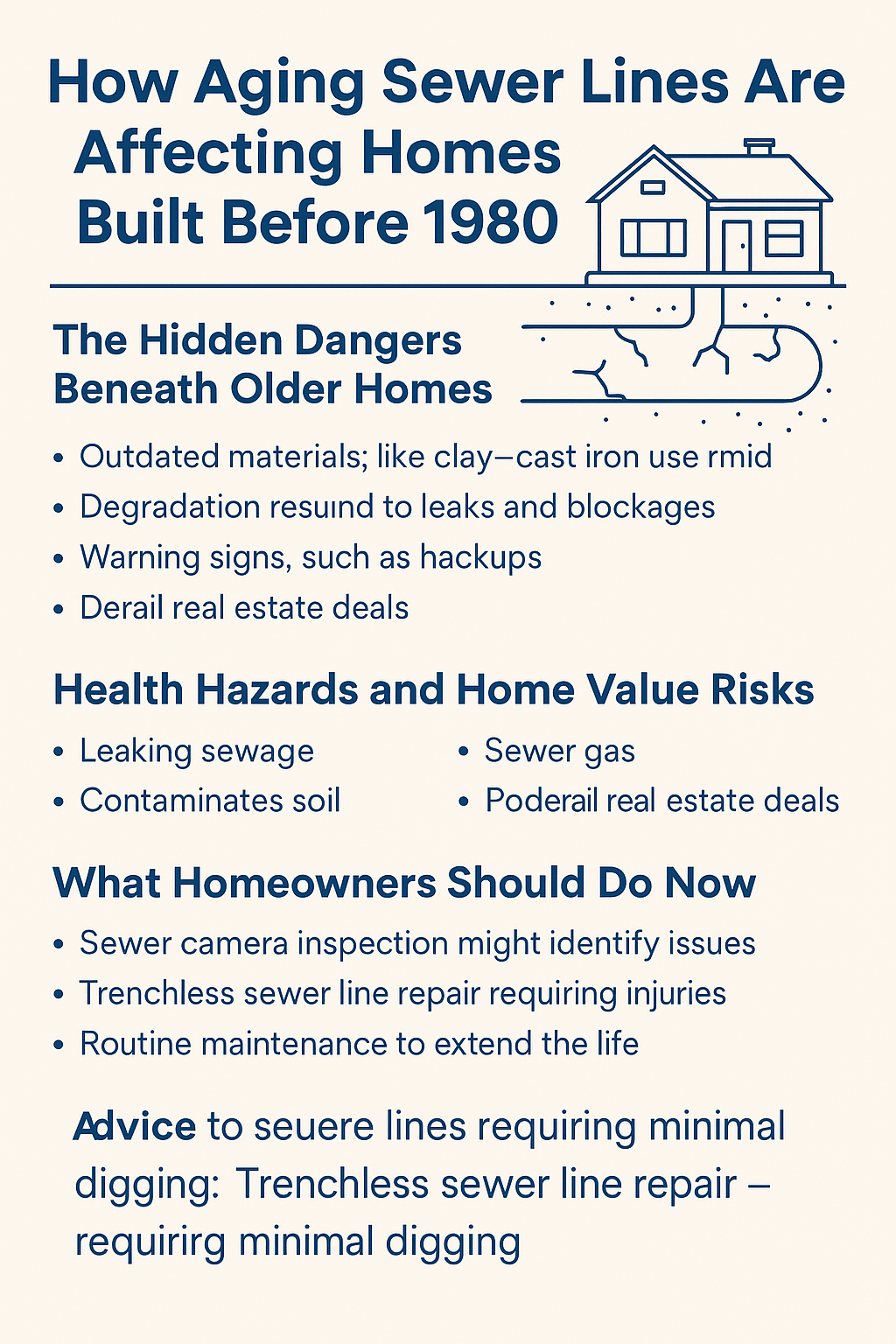- Serving Our NJ Neighbors 24/7 (888) 333-2422
The Hidden Dangers Beneath Older Homes

Many homes built before 1980 carry charm, character, and architectural value—but beneath their floors lie aging sewer systems that could pose serious threats to both property and health. Sewer lines installed in that era often used outdated materials such as clay, cast iron, or Orangeburg (a bituminous fiber pipe), which were not designed to last beyond 40–50 years. These materials degrade over time due to moisture, root intrusion, soil movement, and corrosion, leading to leaks, blockages, and in some cases, total pipe collapse.
Homeowners may not notice the warning signs until it’s too late. Symptoms of deteriorating sewer lines include frequent drain backups, foul odors, slow drainage, gurgling toilets, and damp patches in the yard. Left unchecked, a failing sewer line can cause raw sewage to back up into the home, creating unsanitary conditions, structural damage, and a need for emergency repairs. Moreover, as municipalities across the U.S. face infrastructure aging issues themselves, homes with private lateral sewer lines are expected to shoulder the responsibility of their repairs—which can cost anywhere from $3,000 to $15,000 or more depending on the damage and excavation needs.
Health Hazards and Home Value Risks
Aging sewer lines aren’t just a nuisance—they can be a silent hazard to health and a ticking time bomb for property value. Cracked or collapsed pipes can allow sewage to leak into the ground, attracting pests, contaminating soil, and even threatening local groundwater. In some cases, sewer gas—a mix of toxic and flammable compounds—may enter the home through dry drains or broken seals, posing respiratory risks and a strong, unpleasant odor that no amount of cleaning can mask.
For homeowners looking to sell, hidden sewer line problems can derail real estate deals. Savvy buyers and inspectors now commonly include sewer scope inspections in their due diligence process. If a problem is detected, it can lead to reduced offers or a requirement to fix the issue before closing. Even if you’re not planning to sell, having an aging sewer system can impact your homeowner’s insurance, utility costs, and peace of mind. Investing in a camera inspection or regular sewer maintenance can help prevent emergencies and protect long-term home equity.
What Homeowners Should Do Now
If you live in a home built before 1980 and haven’t had your sewer lines inspected recently, now is the time to act. Sewer camera inspections are affordable, non-invasive, and highly informative. Licensed plumbers can insert a waterproof camera into your main sewer line to assess the condition of the pipes and spot problems like corrosion, blockages, root invasion, or misalignment. Based on the inspection, you might only need preventative cleaning, trenchless pipe repair, or in severe cases, full pipe replacement.
Thanks to advancements in plumbing technology, homeowners now have options like trenchless sewer line repair—methods such as pipe bursting or pipe lining that require minimal digging and reduce labor costs. These solutions are especially appealing for historic or landscaped properties where excavation is disruptive and expensive. Routine maintenance like hydro jetting and root control treatments can also extend the life of your current system.
Ultimately, awareness and timely action are key. Proactively addressing aging sewer lines not only protects your property but also ensures your household stays safe, sanitary, and stress-free. In a world where infrastructure is aging rapidly, your home’s underground systems deserve just as much attention as what’s above ground.





